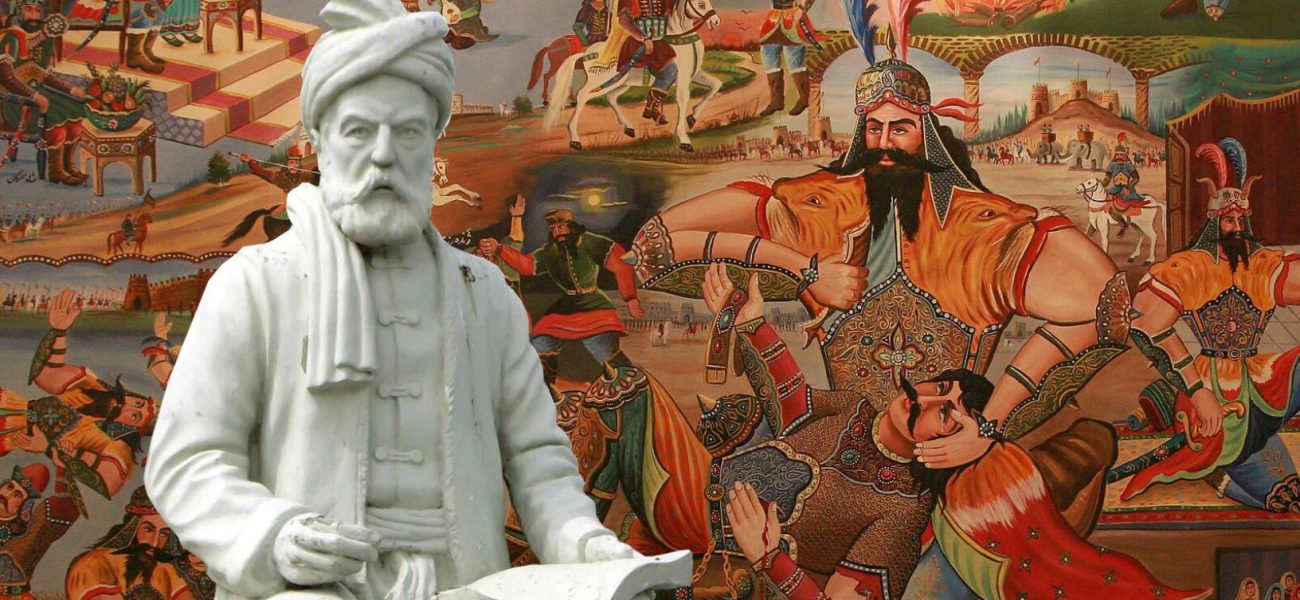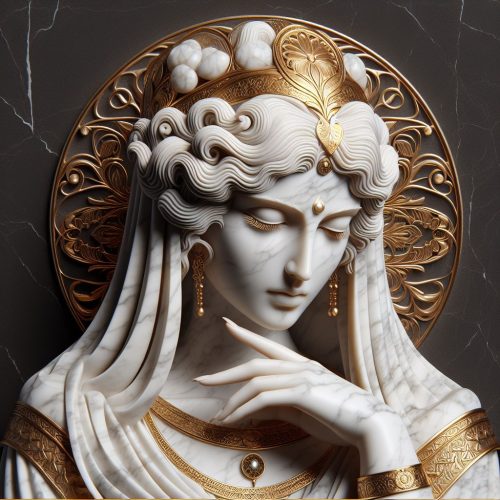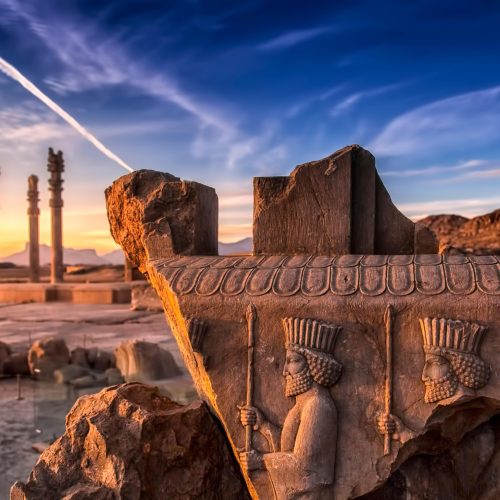Introduction
Ferdowsi, often hailed as the “Homer of Persia,” stands as an immortal figure in the annals of Persian literature. His life and works have left an indelible mark on the cultural tapestry of Iran, influencing generations with his epic poetry. This research article delves into the life, works, and enduring influence of Ferdowsi, shedding light on the brilliance that earned him the title of the national poet of Iran.
I. Life of Ferdowsi
Ferdowsi’s early life unfolded during a period of profound socio-political upheaval in the Iranian plateau. Born in 940 CE in the city of Tus, Khorasan, Ferdowsi experienced the repercussions of the Arab invasion that had significantly impacted Persian culture. His birthplace, Khorasan, was a region that bore witness to the fusion of diverse cultures, fostering an environment where the young poet-to-be would be exposed to a rich tapestry of traditions, tales, and historical events.
Ferdowsi’s family background is believed to have been modest, and little is known about his early education. Nevertheless, it is widely acknowledged that his insatiable curiosity and intellectual vigor led him to immerse himself in the classical Persian literary heritage, absorbing the timeless works of poets like Nezami and Khayyam. This early exposure laid the foundation for his later poetic endeavors.
The tumultuous political climate of the time, marked by the decline of the Samanid Empire and the rise of the Ghaznavid Dynasty, had a profound impact on Ferdowsi’s life. It is said that the idea of composing a grand epic to celebrate the Persian identity and revive its cultural glory took root in Ferdowsi’s mind as a response to the Arab domination and the cultural erosion that accompanied it.
As Ferdowsi embarked on the monumental task of creating the Shahnameh, he faced not only the challenges of chronicling centuries of history but also the struggle to secure patronage for his ambitious project. Despite facing financial difficulties and the lack of official support, Ferdowsi remained steadfast in his commitment to preserving the Persian language and heritage.
Ferdowsi’s dedication to his craft is underscored by the decades he spent laboring on the Shahnameh. His perseverance is particularly remarkable considering the political instability and personal hardships he endured during this period. His life’s work became a literary fortress, guarding the collective memory of Iran against the sands of time.
The completion of the Shahnameh in 1010 CE marked a triumphant moment in Ferdowsi’s life. However, the recognition and patronage he had hoped for did not materialize to the extent he deserved. Despite this, Ferdowsi’s unwavering commitment to his cultural mission and his profound impact on Persian literature secured his place as one of the preeminent figures in the literary history of Iran.
In the twilight of his life, Ferdowsi witnessed the gradual recognition of his poetic brilliance, and his work began to garner the acclaim it deserved. Today, the life of Ferdowsi stands as a testament to the resilience of artistic vision in the face of adversity, and his enduring legacy is an inspiration for scholars, poets, and admirers of Persian culture worldwide.
II. Works of Ferdowsi
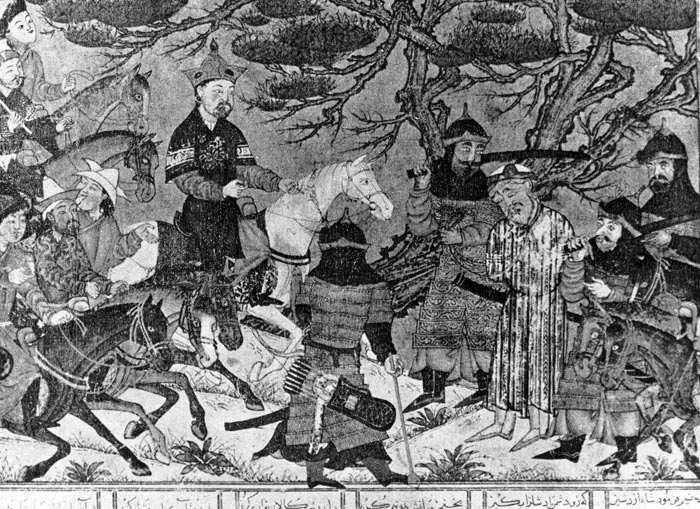
Ferdowsi’s magnum opus, the Shahnameh, is a literary marvel that transcends the boundaries of time, weaving together the fabric of Persian history, mythology, and moral philosophy in an intricate tapestry of poetic brilliance.
The Shahnameh’s Narrative Splendor
The Shahnameh, or the “Book of Kings,” is a monumental epic comprising over 50,000 rhyming couplets. It opens with the mythical creation of the world and delves into the legendary accounts of prehistoric Persian kings, heroes, and mythical creatures. Ferdowsi’s narrative mastery is evident in his ability to seamlessly intertwine historical facts with fantastical elements, creating a vivid and captivating portrayal of Iran’s past.
Preserving Persian Language and Identity
Ferdowsi’s commitment to preserving the Persian language and cultural identity is a central theme in the Shahnameh. At a time when Persian literature faced the threat of Arabization, Ferdowsi consciously chose to compose his epic in classical Persian, a language that resonated with the people. Through this linguistic choice, he not only immortalized the beauty of the Persian language but also rekindled a sense of national pride among his compatriots.
Exploration of Human Morality and Values
Beyond its historical and linguistic significance, the Shahnameh serves as a moral compass, exploring the complexities of human nature and the consequences of moral choices. Ferdowsi’s characters, whether they are the noble kings like Jamshid or the tragic heroes like Rostam, embody virtues and vices that transcend their historical context, offering timeless lessons on justice, loyalty, and the ephemeral nature of power.
Poetic Craftsmanship
Ferdowsi’s poetic prowess is exemplified in the Shahnameh through the intricate use of traditional Persian poetic techniques. The rhythmic cadence of his verses, the skillful employment of metaphors, and the rich imagery elevate his work to the realm of literary excellence. Each line bears the weight of both historical gravitas and poetic beauty, making the Shahnameh a masterpiece that resonates with readers on both intellectual and emotional levels.
Legacy of the Shahnameh
The enduring legacy of the Shahnameh extends far beyond the literary domain. Its influence can be discerned in the works of subsequent Persian poets, storytellers, and even in contemporary Iranian culture. The tales of heroism, love, and tragedy within the epic continue to captivate audiences, and excerpts from the Shahnameh find their way into various art forms, from paintings to theatrical performances.
International Recognition
While Ferdowsi’s primary audience was his fellow Iranians, the Shahnameh’s influence transcended national borders. The epic has garnered international acclaim for its universal themes, and translations into numerous languages have enabled a global audience to appreciate the cultural richness and literary brilliance embedded in Ferdowsi’s work.
In essence, Ferdowsi’s Shahnameh is not merely a historical chronicle but a literary treasure that encompasses the soul of Persian culture. Its enduring appeal lies in its ability to simultaneously entertain, educate, and inspire, ensuring that Ferdowsi’s legacy as a literary giant endures through the ages.
III. Influence of Ferdowsi
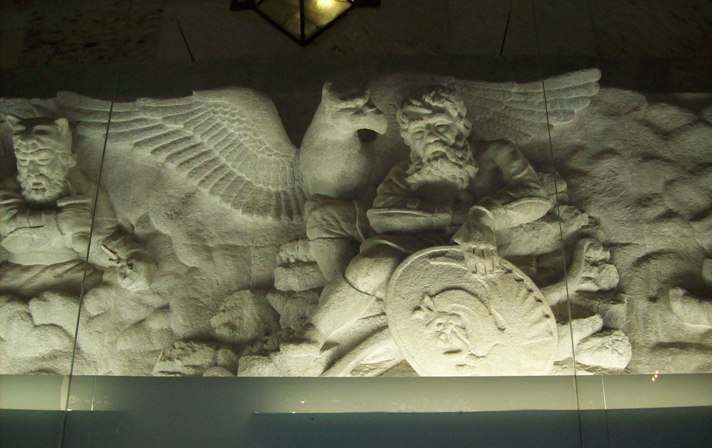
Ferdowsi’s profound influence extends far beyond the confines of literature, permeating the cultural, social, and national consciousness of Iran. His magnum opus, the Shahnameh, stands as a cornerstone of Persian identity, shaping the collective ethos of the Iranian people for centuries.
Cultural Resilience and Nationalism
Perhaps the most significant contribution of Ferdowsi lies in his role as a cultural guardian and nationalist figure. At a time when Persian culture faced external pressures and the threat of assimilation, Ferdowsi’s commitment to preserving the Persian language and heritage became a beacon of cultural resilience. The Shahnameh, with its celebration of pre-Islamic Persian history, became a symbol of resistance, inspiring generations to safeguard their cultural identity.
Literary Continuity and Inspiration
Ferdowsi’s impact on subsequent generations of poets, writers, and intellectuals is immeasurable. The Shahnameh served as a literary wellspring, inspiring poets and storytellers to draw upon its rich narratives and timeless themes. The epic became a template for Persian literature, setting a standard for storytelling, linguistic richness, and poetic elegance that resonated through the works of luminaries like Nezami, Attar, and Rumi.
Cultural Renaissance and Revival
In periods of Persian cultural renaissance, such as during the Safavid era, Ferdowsi’s legacy experienced a renewed appreciation. The Shahnameh was not merely read; it was illuminated, copied, and adorned with intricate illustrations. The reverence for Ferdowsi’s work extended beyond literature to become a foundational element in the revival of Persian art, calligraphy, and manuscript illumination.
Influence on Visual Arts and Popular Culture
The tales of heroes and mythical creatures within the Shahnameh provided a rich source of inspiration for visual artists. Miniature paintings depicting scenes from the epic adorned the courts of Persian rulers, showcasing the enduring visual appeal of Ferdowsi’s narratives. Even in contemporary times, elements from the Shahnameh continue to permeate popular culture, with its stories adapted into films, television series, and visual arts, ensuring its relevance in the modern era.
Shaping Persian Ethical Values
Ferdowsi’s poetic narratives embedded within the Shahnameh are not just historical accounts; they serve as a moral compass, offering insights into virtues, vices, and the complexities of human nature. The ethical dilemmas faced by his characters, such as the tragic hero Rostam, continue to resonate with audiences, fostering a cultural understanding of moral values that transcends time and societal shifts.
National Hero and Cultural Symbol
Ferdowsi, once a poet who struggled for recognition, has transformed into a national hero and cultural symbol. His mausoleum in Tus has become a pilgrimage site, attracting admirers and scholars alike. His legacy is celebrated annually on Ferdowsi Day, a testament to the enduring impact of his work on the cultural fabric of Iran.
Ferdowsi’s influence extends far beyond the literary realm, shaping the very essence of Persian identity. His commitment to preserving language, culture, and history has made him a revered figure, ensuring that the echoes of his verses resound not only in the pages of literature but in the hearts and minds of the Iranian people.
IV. Legacy and Recognition

Ferdowsi’s legacy, though initially obscured by the challenges he faced during his lifetime, has grown to monumental proportions, solidifying his status as one of the most revered figures in Persian literature and cultural history.
Posthumous Recognition
Ferdowsi’s life ended without witnessing the full extent of the impact his work would have on Persian culture. The recognition he yearned for during his lifetime gradually unfolded in the years following his death in 1020 CE. As Persian society underwent cultural renaissances and embraced its literary heritage, Ferdowsi’s contribution became increasingly acknowledged.
National Poet of Iran
Today, Ferdowsi holds the esteemed title of the “national poet of Iran,” a testament to the profound influence of his literary masterpiece, the Shahnameh, on the collective identity of the Iranian people. His verses, once composed in the face of adversity, are now recited with pride and admiration across the country.
Cultural Icon and Mausoleum of Ferdowsi
Ferdowsi’s resting place in Tus has become a cultural pilgrimage site. His mausoleum stands not only as a physical tribute to the poet but as a symbolic representation of Persian literary heritage. Devotees and scholars alike pay homage to the literary giant whose words continue to resonate through the ages.
Ferdowsi Day
Ferdowsi’s contributions are celebrated annually on Ferdowsi Day, a dedicated occasion where Iranians and scholars worldwide honor his legacy. This day serves as a reminder of the enduring impact of his work and its role in shaping the cultural identity of Iran.
Literary Immortality
Ferdowsi’s immortality is not confined to historical accounts or academic discussions; it lives on in the hearts and minds of those who appreciate the beauty of Persian poetry. The Shahnameh, far from being a relic of the past, remains a living testament to Ferdowsi’s literary genius, with each generation discovering anew the richness of its narratives.
International Recognition
Ferdowsi’s influence has transcended national borders, garnering recognition and admiration globally. Translations of the Shahnameh into various languages have allowed readers from diverse cultures to appreciate the depth and universality of Ferdowsi’s storytelling, contributing to the global appreciation of Persian literature.
Literary Inspiration for Future Generations
Ferdowsi’s legacy lives on in the works of countless poets, writers, and scholars who draw inspiration from his masterful storytelling and poetic craftsmanship. The Shahnameh continues to serve as a wellspring of creativity, influencing not only Persian literature but also contributing to the broader spectrum of world literature.
In essence, Ferdowsi’s legacy extends beyond the mere recognition of his literary achievements. He is a cultural beacon, a national symbol, and an immortal figure whose words echo through time, reminding humanity of the enduring power of literature to shape identity, preserve culture, and inspire generations to come.
Ferdowsi’s life and works encapsulate the resilience of the human spirit against adversity and the enduring power of literature to shape cultural identity. Through the Shahnameh, he immortalized the rich tapestry of Persian history, leaving an indelible mark on the hearts and minds of generations to come. As the national poet of Iran, Ferdowsi’s legacy continues to inspire and resonate, making him a literary giant whose words echo through the corridors of time.
Poems
Ferdowsi’s Shahnameh is a treasure trove of poetic gems, showcasing his mastery of language, imagery, and storytelling. While it’s challenging to capture the full breadth of his work, here are a few outstanding examples from different parts of the Shahnameh:
Opening Verses of the Shahnameh:
The very beginning of the Shahnameh sets the tone for Ferdowsi’s epic:
> “In the name of God, the Merciful, the Compassionate.
> Praise to the Lord of the worlds, Who is
> Beyond description, beyond understanding,
> Beyond knowledge.”
These opening lines not only convey Ferdowsi’s reverence for God but also establish the epic’s grandiosity and spiritual undertones.
Rostam’s Lament for Sohrab:
One of the most poignant and tragic episodes in the Shahnameh is the story of Rostam and Sohrab. After a fierce battle, Rostam discovers that he has unwittingly killed his own son, Sohrab. Rostam’s lament is a heartbreaking expression of grief:
> “I slew thee, my fair son! in evil hour
> I did the deed, the bitter fruit of power!
> Now hast thou perished by thy father’s hand,
> A chief in battle, on the thirsty sand.”
These lines encapsulate the deep sorrow and remorse felt by Rostam upon realizing the tragic outcome of the battle.
Zal’s Lament for Rostam:
The Shahnameh is replete with instances of parental grief. When Zal, Rostam’s father, mourns his son’s death, Ferdowsi crafts verses that convey the depth of a father’s sorrow:
> “His eyes, red with the blood of grief and pain,
> Poured tears of blood, his heart was rent in twain.
> ‘O heaven,’ he cried, ‘my brilliant star is set,
> My son, the world’s delight, is breathing yet.'”
These lines poignantly capture the universal theme of parental anguish that runs through the epic.
The Simurgh’s Advice to Zal:
In another part of the Shahnameh, Zal seeks the guidance of the mythical Simurgh, a wise and benevolent bird. The Simurgh imparts profound wisdom to Zal:
> “To catch the breath of peace, be still of tongue,
> And thou shalt find the waters sweet and young.
> When thou art dead, thy soul shall come again
> To God, the Giver, free from grief and pain.”
These verses reflect Ferdowsi’s exploration of moral and philosophical themes, using the Simurgh as a conduit for timeless wisdom.
These examples provide a glimpse into Ferdowsi’s poetic prowess and his ability to evoke a range of emotions, from the grandeur of epic battles to the profound depths of human sorrow and wisdom.

